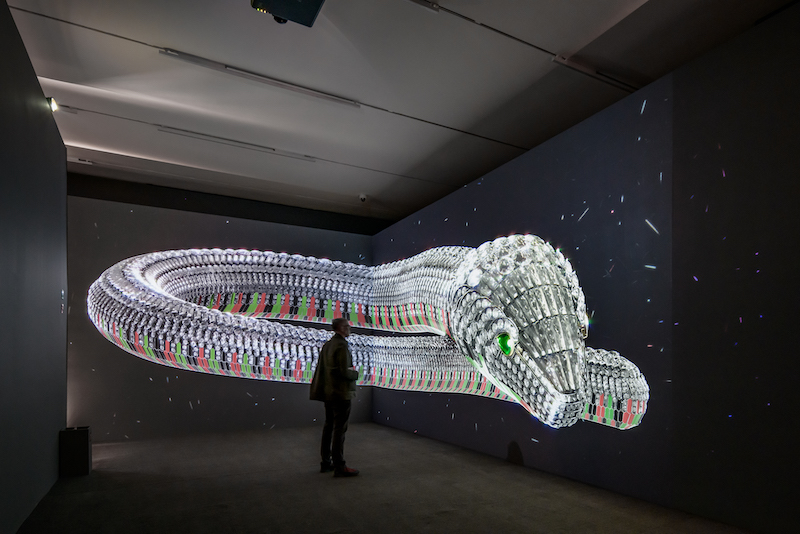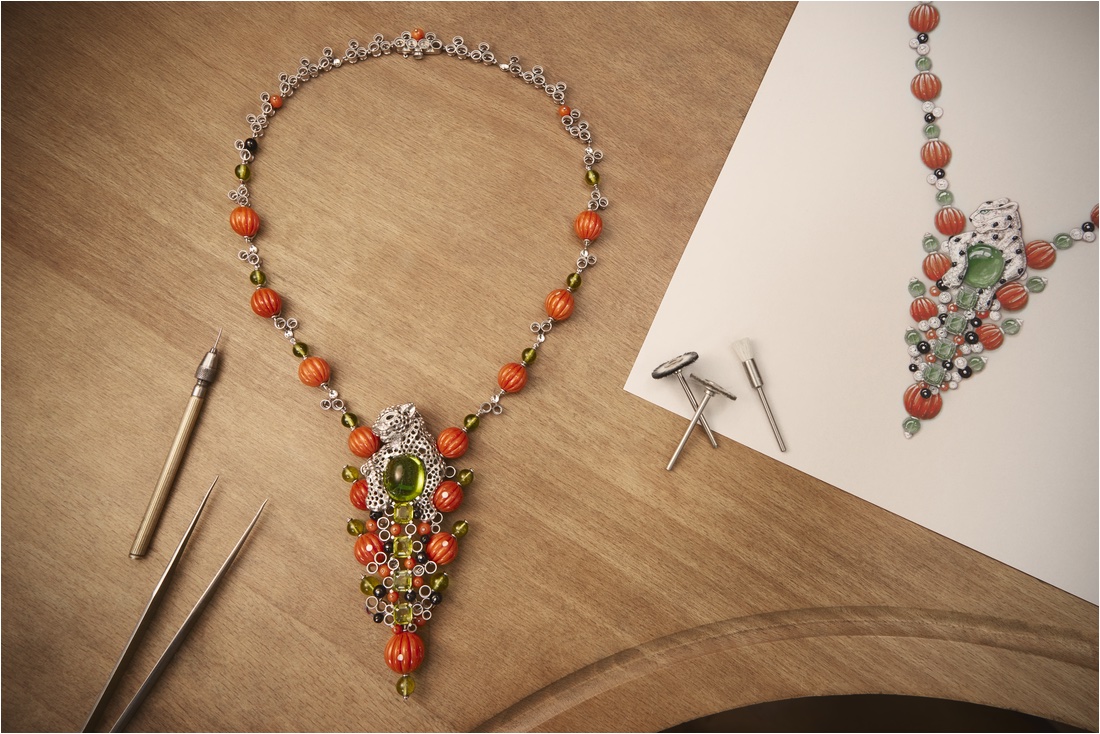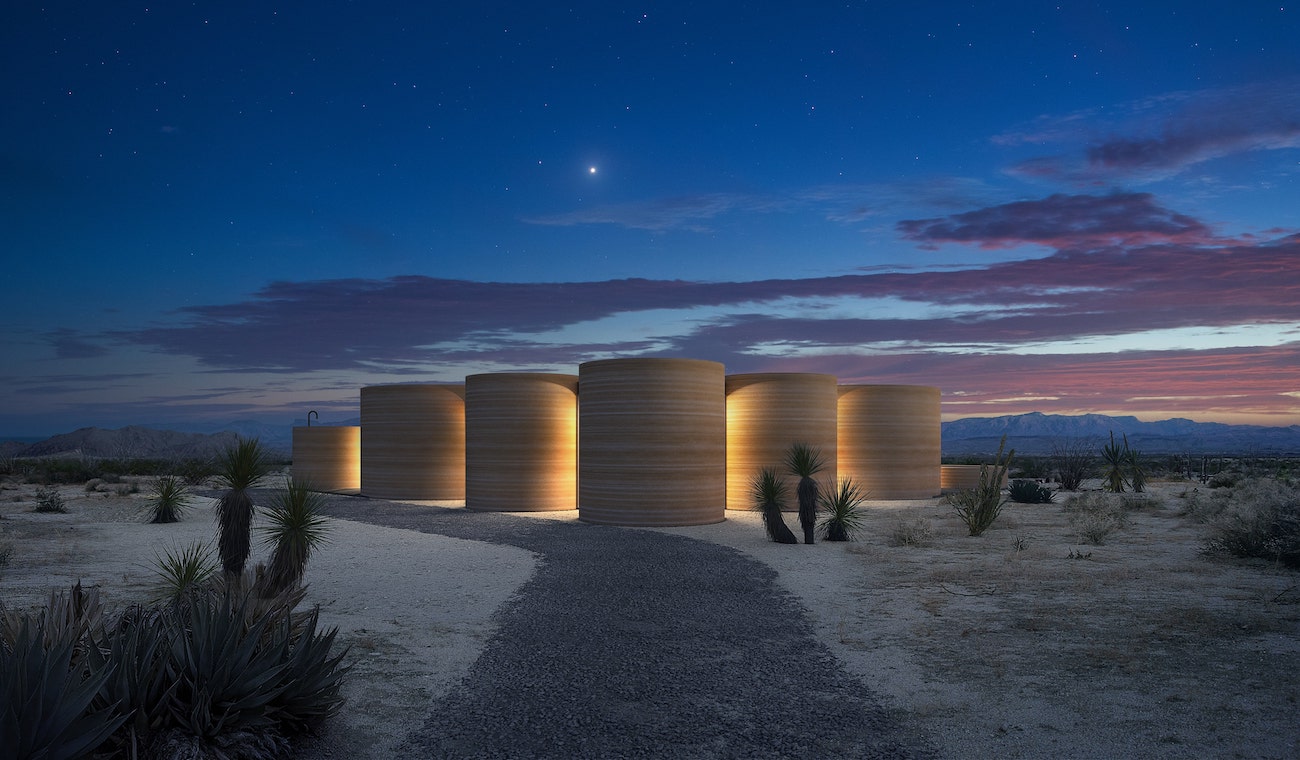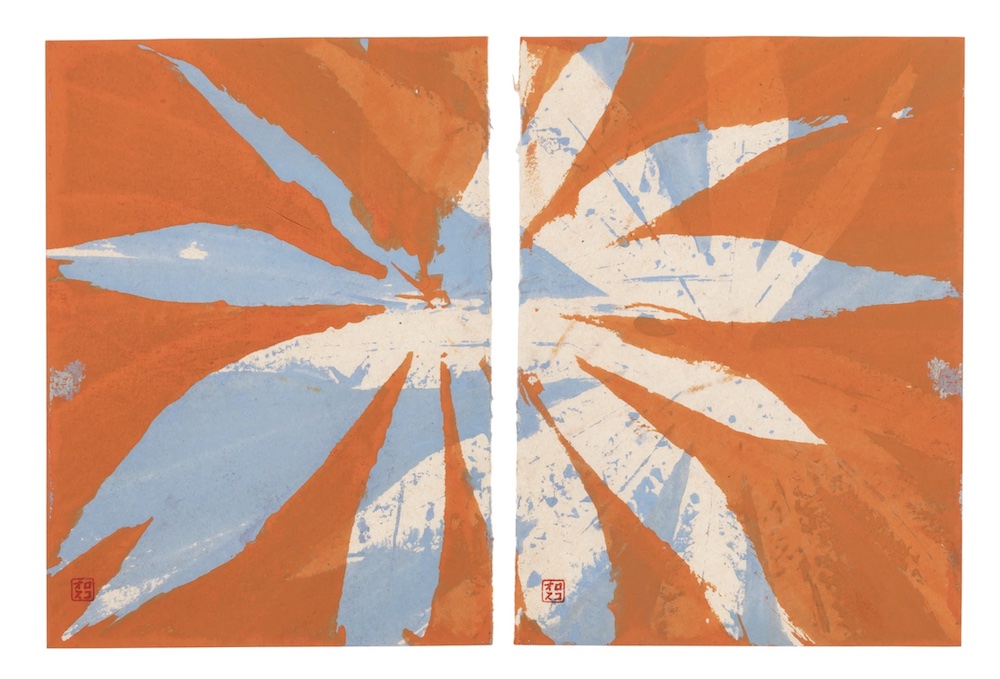The museum in Mexico City exhibited over 160 pieces of iconic jewelry, watches, and design objects.
This spring, “Cartier Design: A Living Legacy” was on view at the Museo Jumex in Mexico City from March 15 to May 14, 2023. Curated by Ana Elena Mallet, the exhibition brought together a selection of iconic pieces from the Cartier Collection, the maison’s archives, and private collections, showcasing the design evolution of the maison through visual iconography, a distinctive eye, a language of craftsmanship, and an element of savoir-faire that marries a rich heritage with an understanding of the contemporary.
Cartier’s pioneering spirit infused the show, with museography by the architect Frida Escobedo, across five themes: “The Early Days and the Birth of a Style,” “Universal Curiosity,” “Jeanne Toussaint’s Taste,” “Wearing Beauty and Measuring Time,” and “Maria Félix and Icons of Elegance.” The nearly 160 jewels, watches, design objects, pieces of archival documentation, and unique items (such as a series of dioramas from the late 1940s) are exemplary of Cartier style and also mark the maison’s connection to Mexico City and Latin America. Of note are several pieces worn and owned by María Félix, an iconic Mexican actress and singer of the 1940s and ’50s. Her relationship with Cartier was so strong, in fact, that in 2006 the house created the “La Dona de Cartier” wristwatch in homage to her. There are also several examples of Cartier’s signature “Santos” collection, created for and named after Alberto Santos-Dumont, the trailblazing Brazilian aviator.
To learn more about “Cartier Design: A Living Legacy” Whitewall spoke with Mallet and Pierre Rainero, Cartier’s image, style, and heritage director.
WHITEWALL: How did looking at Cartier through the lens of design impact your approach to the archives and collection?
ANA ELENA MALLET: It was seminal, this idea of looking at the collection through design. I had to look to the starting points in Cartier’s archives—the design processes, the creative processes, drawings, materials, innovations through the years—and also think about the development of Cartier style through design. Thinking about artistic movements, different currents, different moments; also how history affected Cartier pieces and how Cartier pieces impact history or personal narratives of the client.
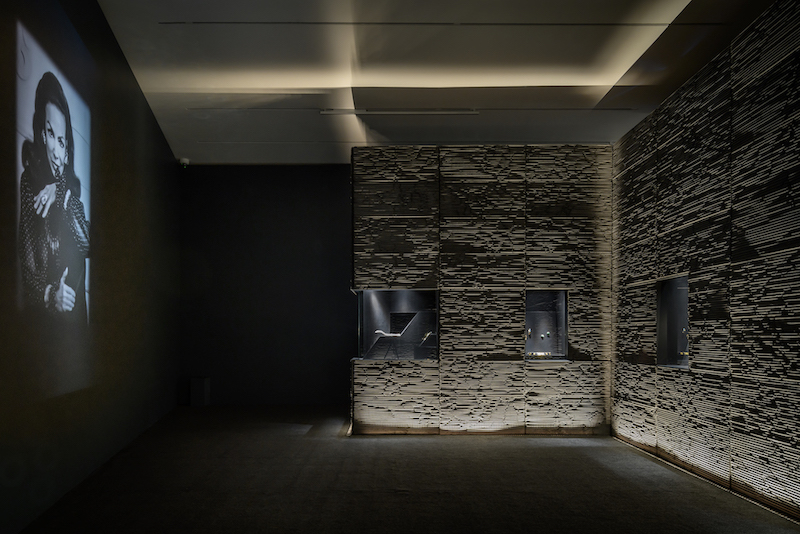
Installation view “Cartier Design: A Living Legacy” (March 15—May 14, 2023) at Museo Jumex, 2023, photo by Moritz Bernoully, courtesy of Cartier.
“Archives are very important.”
WW: How did this exhibition’s debut in Mexico City, at the Museo Jumex, impact your curatorial approach?
AEM: It was important to understand that Jumex is a contemporary art museum. They have an expanded definition of contemporary art and are moving through architecture, design, fashion, and other creative and cultural disciplines that impact our dialogue with contemporary art. It was very important to think of what Jumex is trying to do and has been doing for the past few years to create a curatorial approach that could be contemporary but historical at the same time; archivist, because archives are very important; and that could spark curiosity in the audience. For example, the María Félix part is seminal, a very important part of the Mexican imagination. It’s the last section of the exhibition, those pieces are the protagonists, and having photographs of María Félix wearing the jewelry at different points in her life was very important.
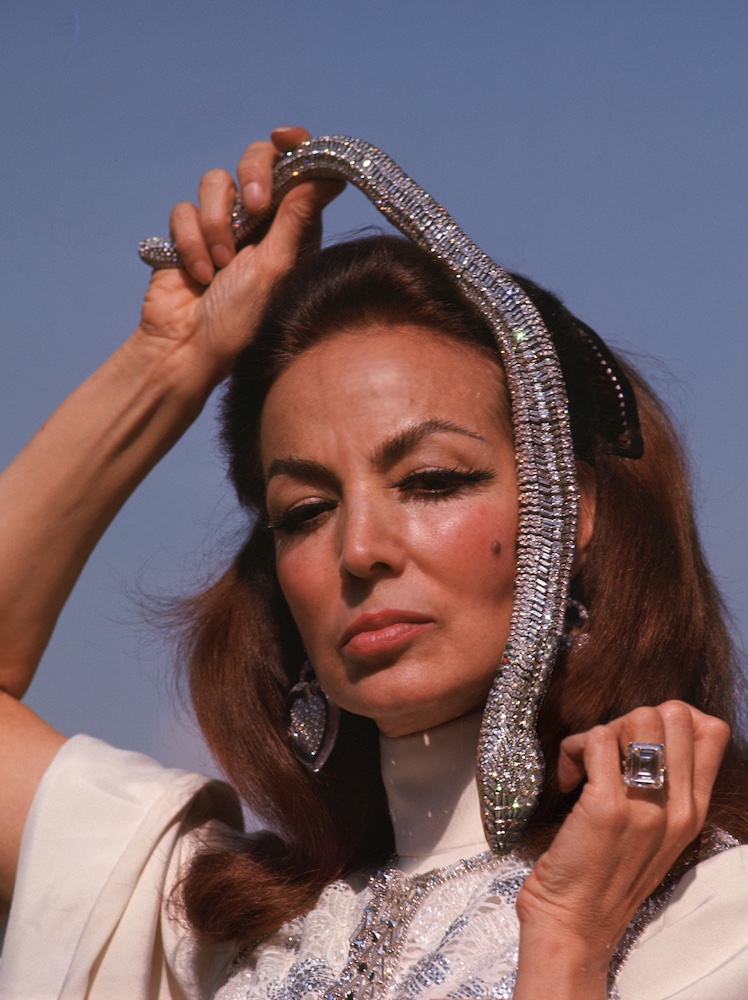
María Félix photographed by Ignacio Castillo, wearing her “Snake” necklace commissioned from Cartier Paris in 1968, © Ignacio Castillo, courtesy of Cartier.
WW: Direct links to Mexico and Latin America are made via names like María Félix and Santos-Dumont. Can you tell us about some of those pieces and their relationship to Cartier?
PIERRE RAINERO: I think that the link with these clients is their shared attraction to Paris’s artistic dimension, the lifestyle it offered, the idea of Paris as an epicenter of creativity. It’s also a place to enjoy the good life. For both for Santos-Dumont and María Félix, that was the idea.
For Santos-Dumont, too, he knew that there was a reverence in Paris for pioneers in aviation. María Félix had a personal link because she married a Frenchman, and she wanted to live in Paris, where she enjoyed life her own way.
Another dimension very present in the exhibition is the curiosity that Cartier had for Central and South America. The exhibition starts with a very important piece that serves as a statement for the entire exhibition, which is a brooch in the shape of a pyramid with direct allusion to the pyramids found in pre-Columbian Mexico. Ana Elena Mallet chose that piece not only because of the resemblance of the shape [to the pyramids] but also because of its meaning. The brooch is not an “accident” in the production of Cartier; it’s not the only one inspired by this pyramid shape.
And there’s the natural inspiration from Central and South America, which was also very inspiring—palm trees, animals from the jungle, snakes, and so on. And also, this is the provenance of many stones. All of this was very present in the imagination of Cartier’s creatives.
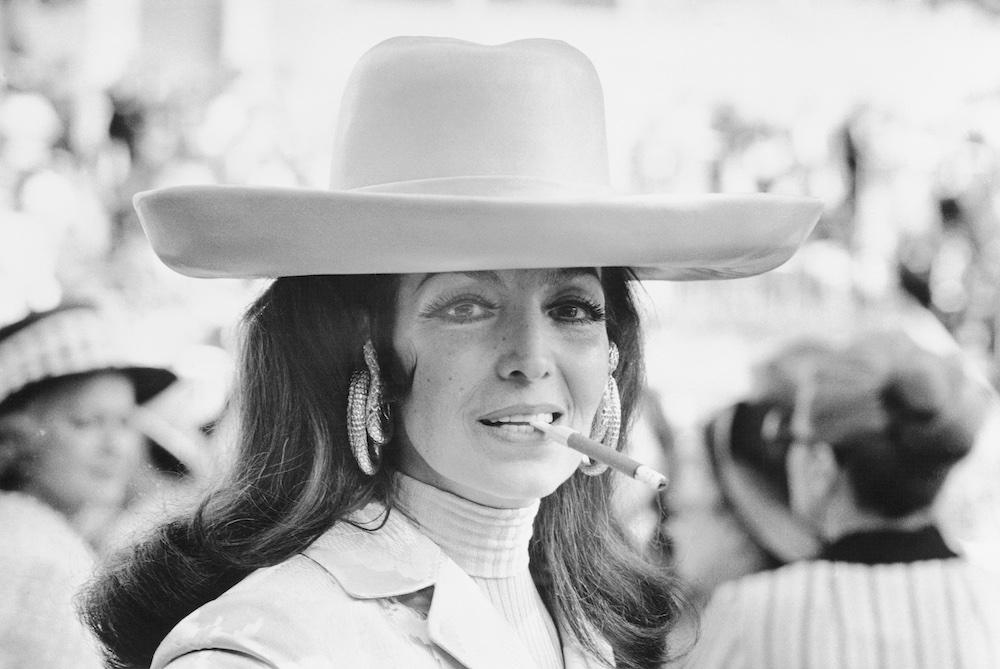
María Félix photographed during a horserace in 1972. She is wearing her pair of ‘Snake’ ear clips created by Cartier Paris in 1971, © Keystone France / GAMMA-RAPHO, courtesy of Cartier.
WW: What are some of the unique or unexpected materials we may see?
AEM: The jewels of María Félix coming back to Mexico are very important. People still love María Félix; she’s still a very important icon. Also looking at, for example, the garland style and how Cartier started using platinum and the evolution of the style.
I think another unique, unexpected feature, more than a material, is the figure of Jeanne Toussaint, the first female creative director of Cartier. A woman. It was unusual in that period (1933–1970s) to have a woman as the head of a creative atelier, and she was something very important, so we have a whole section dedicated to her style and taste and understanding how she moved and how she was central to creating and grounding the Cartier style.
WW: Many pieces on view are made to order for Cartier’s clients. Can you tell us about some of the highlights of the made-to-order pieces for you, in terms of uniqueness and totally personalized design?
PR: Even if it’s quite obvious, I have to mention all the pieces that María Félix ordered at Cartier. This includes the very important snake necklace made for her in 1968 and the two crocodiles that can be worn as a necklace, brooches, or used as table decorations that were made in 1975. I think these pieces are extraordinary because of their importance, their volume, their preciousness, but also the incredible design and craftsmanship.
“It’s not by chance that Cartier made those pieces in the way that they were made.”
One of the qualities of the exhibition is the way in which it showcases how these extravagant special orders are totally in line with Cartier’s evolution. Just before you enter the room where those two special orders are on display, you have a room dedicated to the style and influence of Jeanne Toussaint on Cartier creations. And there’s a total logic from the previous room to the room where those pieces are on display. So it shows that it’s not by chance that María Félix came to Cartier to have them made, and it’s not by chance that Cartier made those pieces in the way that they were made. They are totally in the spirit of the vision of Cartier at the time.
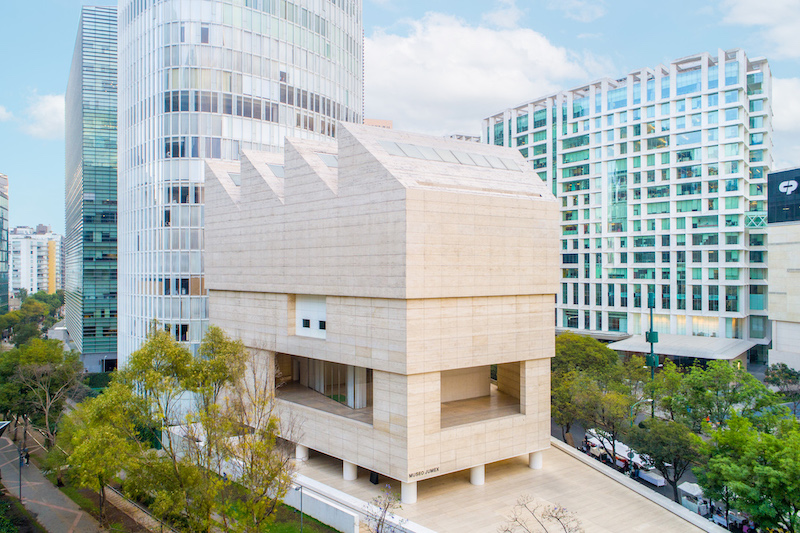
The Museo Jumex, photo by Fernando Marroquín.
“Jewelry is not just ornamental.”
WW: What kind of understanding of Cartier and its design history do you hope visitors walk away with?
PR: To understand that jewelry is also art. Not just an adornment, although the creations signify something for the client that owns or wears the jewelry, but they are also very iconic pieces that relate to moments in history. I want people to understand that jewelry is not just ornamental, but that it has a symbolic meaning in history and in the narratives of the people who wear each piece.



